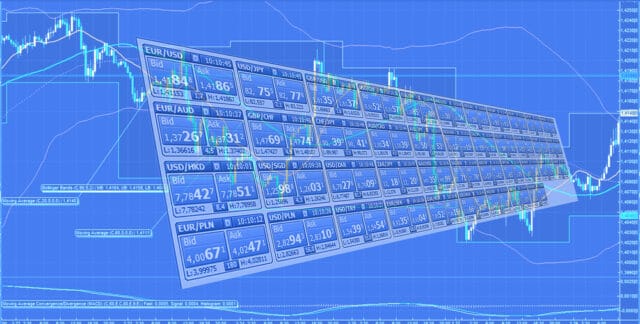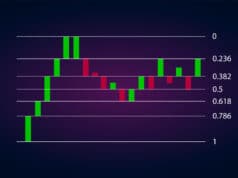A lot size is the number of tradable units of a currency pair. The more units you trade, the more you stand to make in the way of profits. Conversely, a large lot size would translate to bigger losses if the market was to go against you. Therefore, determining the best lot size is a crucial step in risk management.
To understand how lots work, let’s consider an example. Imagine your local fruit vendor sells grapes in packets of a dozen grapes each. Now, that packet of 12 is the standard lot in the grape trade. A competing vendor may open a shop down the street and sell smaller packs of six grapes each, all in a bid to make their fruits more affordable. Now that packet of 6 would be a mini lot.
In the forex market, a standard lot consists of 100,000 units of the base currency. In a currency pair like the EURUSD, the euro is the base currency while the US dollar is the quote currency. Thus, a standard lot of this pair would consist of 100,000 euros. In addition to standard lots, most brokers will offer mini, micro, and nano lots.
Forex lot sizes
We just mentioned that currency pairs are traded in standard, mini, micro, and nano lot sizes. What do these lot sizes entail? Well, these lot sizes can be summarized in the following table.
| Lot size | Unit | Volume | Value per pip |
| Standard | 100,000 | 1.00 | $10 |
| Mini | 10,000 | 0.10 | $1 |
| Micro | 1,000 | 0.01 | $0.1 |
| Nano | 100 | 0.001 | $0.01 |
Table 1: Tabular representation of the different lot sizes.
The above table has introduced a new concept – pips. A pip is the smallest change in the price of a currency pair. Most pairs’ prices are quoted to four or five decimal places. The only exception is the pairs involving the Japanese yen (JPY), which are quoted to two or three decimal places.
In pairs involving the JPY, any change in the second decimal place constitutes a whole pip, while the third decimal place constitutes a fraction of a pip, often called a pipette. Therefore, if we were trading the USDJPY and its price moved from 113.550 JPY to 113. 562 JPY, that’s a movement of 1.2 pips.
In all other currency pairs, a change in the fourth decimal place consists of a full pip, while a change in the 5th constitutes a pipette. For example, if the EURUSD pair’s price moved from $1.16120 to $1.16143, that would be a move of 2.3 pips. With this backdrop, we can dive into the different lot sizes.
Standard lot
As aforementioned, a standard lot comprises 100,000 units of the base currency. Taking the EURUSD pair, for example, this means that if the pair’s price was $1.1600, buying a standard lot of the base currency, euro in our case, would set you back $116,000.
Now, let’s assume this pair’s price shot up to $1.1680 after a few hours, at which point we decided to sell our holdings. In this case, the pair will have moved 80 pips in our favor. From table 1, every pip of movement when trading a standard lot equals $10. Therefore, our trade will have yielded 80 * $10= $800. In the same way, if the market went the other way and we got a loss of 80 pips instead, we’d be $800 in a loss.
Mini lot
A mini lot comprises 10,000 units of the base currency. This means that it is only a tenth of the size of a standard lot. Therefore, its profit and loss implications will be lower than those of a standard lot. Let’s look at an example.
Let’s assume we’re trading the EURUSD pair again, only this time with a mini lot. At $1.1600, purchasing a mini lot of euro would cost us $11,600. After a few hours, the price went down to $1.1520, at which point we decided to exit our trade to avoid further losses. This is a move of 80 pips against our position.
From table 1, each pip movement in a mini lot is equal to $1. Therefore, this trade translated to a loss of 80 * $1 = $80. In the same way, if the trade resulted in an 80 pip profit instead, that would translate to an $80 gain.
Micro lot
In forex trading, a micro lot consists of 1000 units of a base currency. This means that it is a tenth of the size of a micro lot. Consequently, its profit and loss effects will be less than those felt when trading a mini lot.
Taking our EURUSD example, let’s assume we bought one micro lot of the pair. At $1.1600, buying 1000 euros would cost us $1,160. If the pair’s price went up 80 pips to $1.1680 and we sold our euro, we would have recorded a profit of $0.1 * 80 = $8. Similarly, an 80 pip drop in the pair’s price would translate to an $8 loss.
Nano lot
This is the smallest tradable unit of a currency pair. It consists of 100 units of the base currency. To buy one nano lot of EURUSD at $1.1600, you’d need $116. If the price went up 80 pips and you sold your euros, you would record a profit of $0.01 * 80 = $0.80. Similarly, if the pair’s price went down 80 pips, you’d be in a $0.80 loss.
Conclusion
Since it is not possible to buy one unit of a currency on the forex market, currencies are traded in units called lots. A standard lot consists of 100,000 units of a base currency, while a mini lot consists of 10,000 units. A micro lot contains 1,000 currency units, while a nano lot comprises 100 currency units. The bigger the lot size you trade, the larger your profits and losses tend to be.




